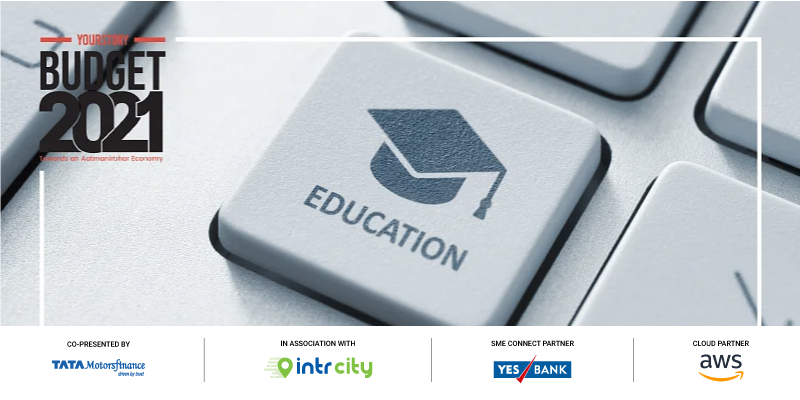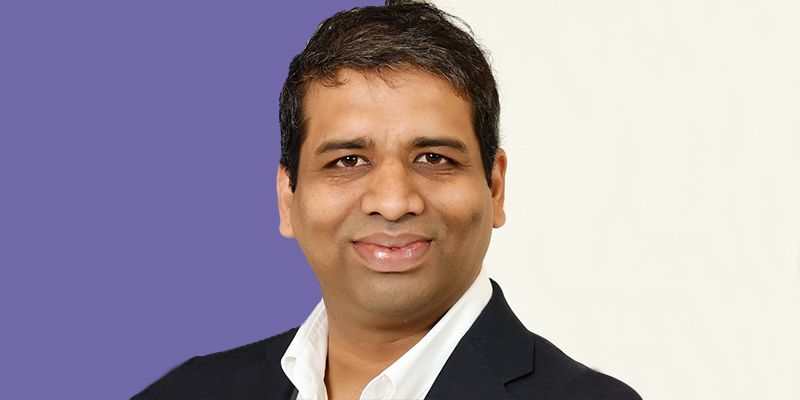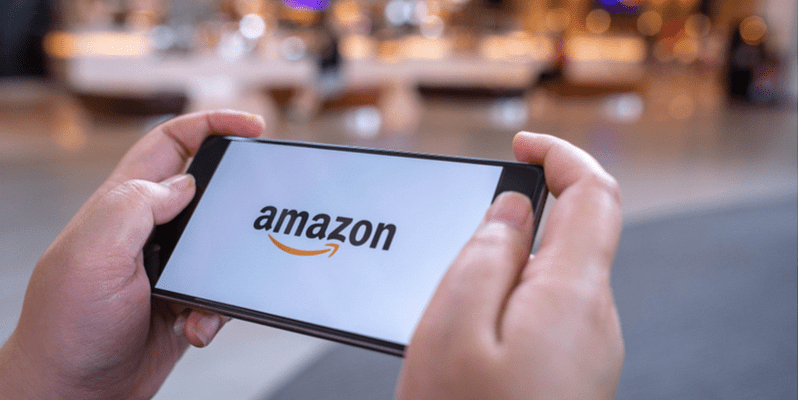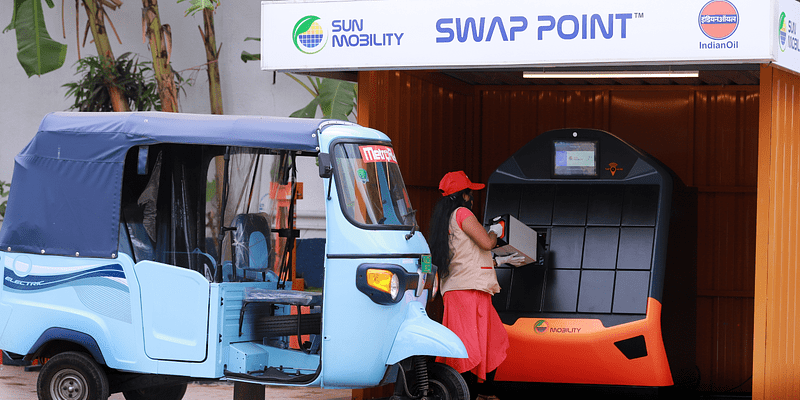From Leh to Lakshadweep, Amazon logistics now covers all of India
Athira Nair
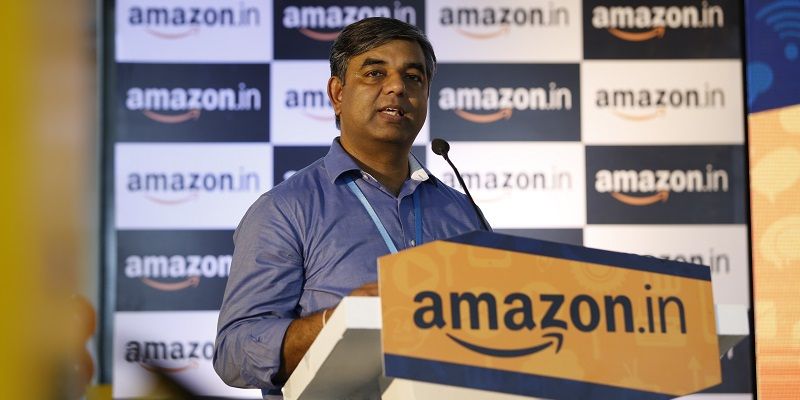
Monday February 12, 2018 , 11 min Read
Akhil Saxena, logistics head at Amazon India, speaks about the company’s robust logistics network and far-reaching innovations that ensure customer satisfaction to the last mile.
Amazon’s enviable growth in India is built on the back of a robust logistics network spanning massive warehouses, smaller sorting hubs, and a long-haul, mid-mile and last-mile delivery network that even includes transport by boat. Akhil Saxena, the head of Amazon India’s logistics network -- Vice President of India Customer Fulfilment at Amazon.in, spoke in great detail about this network that needs to operate with clockwork precision to ensure customer satisfaction. He confirmed that Amazon would replicate the ‘I Have Space’ programme, which was an India innovation, in other markets. Edited excerpts:
YourStory: Give us an overview of Amazon India’s logistics operations.
Akhil Saxena: When we started in 2013 we realised that the main pain areas for sellers in India was that they didn’t have a reliable and robust logistics network of couriers who would deliver to the whole country. So we built this product called Easyship. Here we go to a seller’s premises, pick up a packet that he has already packed, put our label on top of that and use our transport to deliver the product to the customer.
And then we innovated another product called Seller Flex, which is somewhere between Easyship and Fulfilled by Amazon (FBA).
But our flagship product is FBA — this is our most important one because of the technology and the investments that we have made not only in India but in the last two decades with Amazon globally. We use it to fulfil orders very quickly and with low defect. And when sellers have orders with low defect rates it increases their sales as they get positive reviews.
So the core part of fulfillment by Amazon is the Fulfillment Center (FCs). When we started in 2013 we had one FC but by the end of 2017 we have 41 in 13 states. And that is the amount of investment we have done in in the last four years to build them. These FCs are also divided into centres for large appliances and bulky goods, including furniture and small parcels.
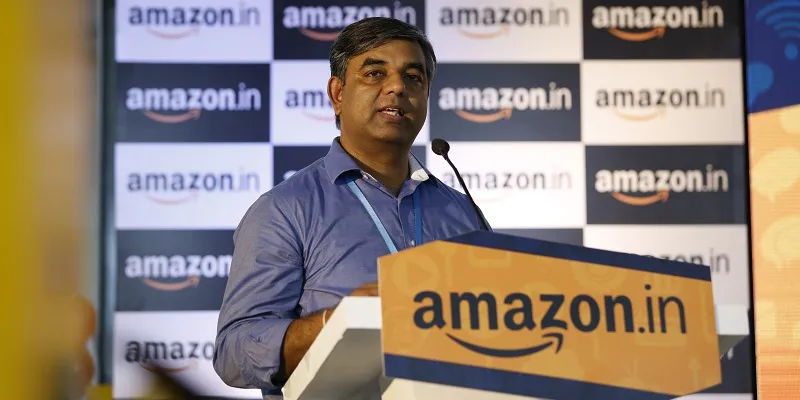
YS: So what is the split?
AS: We have Nine (FCs) for large and bulky appliances, the rest for small parcels.
YS: And what’s the split between FBA and the rest?
AS: 90 percent of sellers use these programs. Between 2016 and 2017 the network has almost doubled.
YS: When you say small parcels, does that include Pantry?
AS: Pantry is a part of this network. Amazon Now is a different network.
When an order is placed, we move a product from the FC to the sortation centre in the origin location, then to the destination sort centre and finally last mile to the customer’s address. We have a network of 26 sort centres.
You could move the shipment by different modes from origin to destination city. We have ground, air and then multi-model that in some cases also includes waterways. So in places like the Andamans, there is a boat which leaves alternate days, so it takes 16 hours. A very small percentage is transferred by air.
Also Read: Decoding Amazon’s format-based grocery strategy in India
YS: How does Prime fit into all this?
AS: Now that we have FCs in 13 states we have got inventory that is closer to the customer and that is helping our Prime programme. We have been able to grow the prime selection by 5X or 6X. And that selection grows because it is close to the customers.
Coming back to the delivery part, the final bit is last mile. One way is that we have our own logistics in these cities. We currently have close to 150 Amazon delivery offices. This number has gone up by about 40 percent within the last year.
The second piece what we have built, which is unique to India, is the service partner network. These are entrepreneurs who could have had experience in logistics or complete novices, whom we help with tools and processes. It could be a housewife, who wants to make extra money, an NGO working with disabled people, retired army personnel or a small courier company, essentially, whoever is willing to work and partner with Amazon. We have about 350 such stations and they do almost what our logistics would do.
YS: That includes delivery personnel as well?
AS: Yes, they run the full operation. For example, in Chennai and Thiruvananthapuram we have all-women delivery stations. In Mumbai we have another company known as Mirakle Couriers, who employ specially-abled people to deliver packages for us. In the Andamans we have a woman entrepreneur who was a bio researcher but has now become a service partner. The whole objective is to say that as we grow and scale up in the country how do we engage with the ecosystem around us and how do we partner with the communities around us? There has been a lot of focus on women because logistics is a place that we hardly see many women. But a customer won’t be able to distinguish between the delivery agent from Amazon and from a service partner.
We have a programme that is built in India for the Indian ecosystem and other countries are adopting it as well. It is something called ‘I Have Space’ (IHS). So it is more like a crowdsourcing platform where you are looking at people who have a little bit of space and a little time during the day. What is the problem in India? Addresses are like “behind bank” or “behind ghanta ghar”. So that makes it hard to find the precise addresses in the last mile.
Also, in India we are very used to calling the kirana guy close to the house for products that he delivers to the doorstep. He gives no-questions-asked replacement and credit. So I trust him and he trusts me.
The whole problem of customers not being at home can be tackled with the use of IHS. We piloted this in 2015. And last year we had 17,500 stores across 225 cities. These are tea stalls, kirana shops, beauty shops, medical shops, and mobile recharge points. We give them a bag with the packages in the morning that has to be delivered within a two to four kilometres radius. No additional investment is needed on their part, they earn some extra money and we only incur the cost of getting the packages to them. But we give them the app. They use that app to make the deliveries and we have a system to collect the cash and any packages that have not been delivered. Even the payments are done online on the first or second of the month, so for them it is a seamless process.
All these three channels are managed by Amazon directly. Then we use third party logistics companies.
Typically for peak seasons when we have sales, we hire people for short-term period which is festive hiring.
So that is about operations in brief. We are making significant investments here. So you would have seen that the last Diwali was a very successful one and a large part of it is because of the ability to scale up, almost doubling the capacity for fulfillment and expanding the transportation capacity. Capacity is in two parts, one is same city and more number of packages and the second is newer cities. So we have launched our highest station in Leh. We deliver to Lakshadweep. We have launched in four more states - Nagaland, Tripura, Mizoram, Meghalaya. and Jharkhand. We were delivering through the third-party logistics companies, but now Amazon has a direct physical presence.
YS: What are the other countries where you are launching I Have Space?
AS: India is very unique so we built it in our own manner, considering COD and so on. But Mexico and Brazil are places where it will become very relevant. So we are building the tech and so on.
YS: There is more focus on ground/surface transport capabilities and less reliance on air. So how much ground can you cover in a day or two days? Is that an important metric?
AS: The seller decides where he wants his inventory. So a Kanjeevaram saree seller in Bangalore does not want to keep inventory in Kolkata. But the buyer is from Kolkata. I might be able to ship it by air. But to go another 100 km from Kolkata to Sundarbans then I need two days because I need to use ground. So we have expanded our reach and reduced the time of delivery because that is required for Prime.
The second piece is the sortation centres. So if we have only one sortation centre in Delhi then everything has go from there. But if I have 10 sortation centres then it makes it easier. Each sort centre is a junction for me. So you just have more nodes to change links.
And that helps me reduce the time that is available between online deliveries.
In India, no company runs airplanes only for cargo, domestically. Everything is a passenger plane, except Bluedart, which has six planes. We work with BlueDart. Primarily during the festival season there is passenger traffic and airlines prefer passenger over cargo. So we have found a balance between air and ground. We have built the ground network and scaled that up but we have also scaled number of airlines that we work with.
A large part of transport is through ground. And we are still able to cover the one or two day promise. That is why the Prime programme is growing across the country.
YS: With GST now in the picture, do you still need a highly distributed FC network?
AS: GST is a destination based tax or consumption based tax. Our philosophy of inventory is about being close to customers. GST was announced in 2016 but there was this whole ambiguity of when it will be rolled out and so on. We announced in February last year about building FCs and we built every single one of them. And we are continuously investing on it this year. So the problem is not really changing because of GST. Because the customer location is the same. It's the inventory location that changes and that is determined by the seller. So if the seller wants to now bring inventory into Kolkata, because it’s easier for him, then so be it.
YS: But are you seeing that happen?
AS: Yes, we have what we call DARC- distance aware rate card - where sellers can choose to keep inventory close to their customers and pay lesser for shipping. So we have provided them the flexibility of saying, if you are shipping across the country there is a larger charge that you will have to pay. If you replicate inventory in other places then you will be able to service faster. More people will want to buy if the product is faster.
YS: How has the Prime programme impacted your logistics investments?
AS: The Prime programme came only in 2016 but our investments have continued from 2013. We haven't waited for Prime to build our network. We have continued our expansion on network because whether it’s Prime or non-Prime a customer needs speed. In fact, I think Prime is getting a lot of leverage and this expansion is enabling that much faster delivery than a normal non-prime network.
Also Read: Amazon India’s real Prime strategy is not the obvious one
YS: The challenge of Indian addresses—how are you dealing with it?
AS: We use a lot of technology in terms of machine learning in order to learn addresses, and also use geocodes. We are using machine learning to build accuracy on geocodes, and the Prime programme is helping us as the same customer is buying repeatedly. If you try to put in some junk addresses you won't be able to register.
YS: What is your cost of holding inventory?
AS: Our whole technology in the FC is based on minimising cost of holding inventory.
How do we do it? By ensuring we can put in as many units in the physical cube. That's why we always talk about cube and not about number of units because you can keep many books in one cube but only one ball in one cube. So we talk about the cubic square space. So the technology that we use helps optimise storage in that particular room or cube. When I do that, I reduce the cost of holding inventory and hence the sellers have to pay a lesser fee.
YS: You already have 41 FCs. Will you expand this further?
AS: For that I would just say wait and watch.
YS: Regarding Amazon Now, have you started delivering grocery from your own dark stores?
AS: Amazon Now is in four cities. In each city we have a pick up from a Big Bazaar or more and we also have it from Amazon stores. So if you are in this pincode and if you can use your pincode, you open your Amazon Now app and you can find an Amazon Store option.
YS: Do you see Prime Air coming to India? Do you see a fleet of aircraft for yourself?
AS: With my eyes open, the answer is no. But when I close my eyes, I would say yes.






